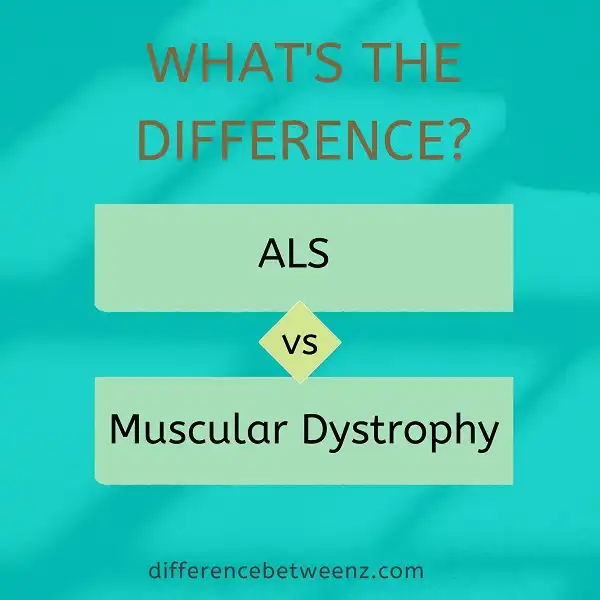ALS and Muscular Dystrophy are both nerve disorders that affect the muscles. They are both serious conditions, but they are not the same. It is important to understand the difference between them so that you can get the right treatment if you or someone you know is diagnosed with one of these conditions. In this blog post, we will discuss the key differences between ALS and Muscular Dystrophy. We will also look at some of the most common symptoms of each condition. Stay tuned for more information!
What is ALS?
- ALS is a progressive neurodegenerative disease that affects nerve cells in the brain and the spinal cord. ALS stands for amyotrophic lateral sclerosis. ALS is also known as motor neuron disease (MND) or Lou Gehrig’s disease. ALS is a physical disease that slowly robs people of their ability to walk, speak, swallow and eventually breathe. ALS does not affect a person’s mental capacity.
- The cause of ALS is unknown and there is currently no cure. ALS can strike anyone, anywhere, at any time. ALS affects men slightly more often than women. ALS usually begins between the ages of 40 and 60, but it can occur earlier or later in life. Most people with ALS die within two to five years of being diagnosed with the disease. There are two types of ALS: familial ALS (FALS) and sporadic ALS (SALS).
- Familial ALS accounts for approximately 5% to 10% of all cases of ALS; familial refers to cases where there is a family history of the condition. Sporadic ALS accounts for approximately 90% to 95% of all cases; sporadic means that cases occur randomly with no apparent cause. The onset, progression, and severity of ALS can vary from person to person.
What is Muscular Dystrophy?
- Muscular dystrophy is a disorder that is characterized by the weakening and eventual breakdown of muscle tissue. Muscular dystrophy can lead to serious respiratory and cardiac problems, and often proves fatal. There is no cure for muscular dystrophy, however, there are treatments available that can help to improve quality of life. Muscular dystrophy is caused by a mutation in the dystrophin gene, which leads to the production of an abnormal form of dystrophin protein.
- This protein is essential for the structure and function of muscle cells. Muscular dystrophy can be inherited, or it can occur spontaneously. The most common form of muscular dystrophy, Duchenne Muscular Dystrophy, typically affects boys and young men. Muscular Dystrophy is a progressive disorder, meaning that it worsens over time. There is no way to predict how quickly the disease will progress, or how severe it will be.
- Muscular dystrophy is a devastating disorder that robs people of their strength and mobility. There is currently no cure, but with continued research, we may one day find a way to treat this terrible disease.
Difference between ALS and Muscular Dystrophy
ALS and Muscular Dystrophy are two very different conditions. ALS, or amyotrophic lateral sclerosis, is a debilitating neurological disease that affects the nerve cells in the brain and spinal cord. This leads to muscle weakness and atrophy, and eventually death. Muscular dystrophy, on the other hand, is a group of genetic disorders that cause muscle weakness and deteriorating motor skills.
There is no cure for ALS, but treatment can help to extend life expectancy and improve quality of life. Muscular dystrophy can often be managed with physical therapy and medication, and some forms of the disorder are milder than others. As a result, it is important to seek medical advice if you or a loved one is showing symptoms of either condition.
Conclusion
ALS and Muscular Dystrophy are both serious diseases, but they have different underlying causes. It’s important to know the difference so that you can get the right diagnosis and treatment for yourself or a loved one. If you think you may have one of these diseases, please see a doctor as soon as possible. Thanks for reading!


